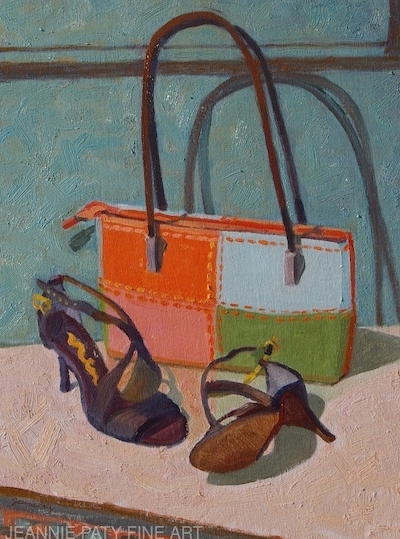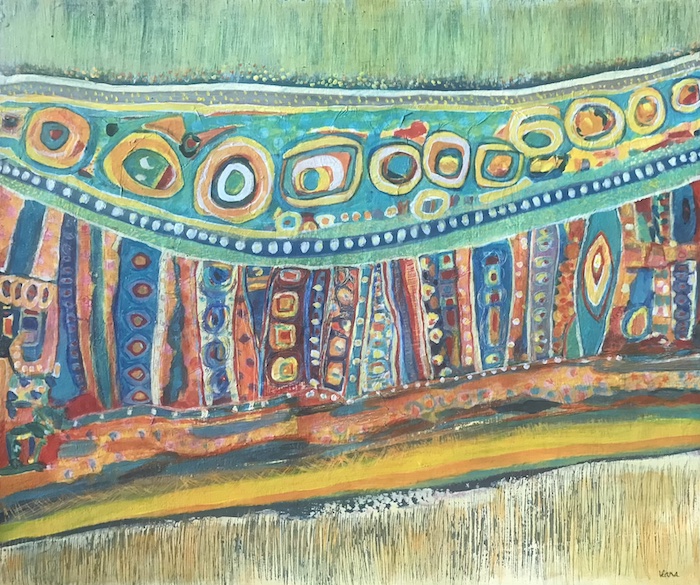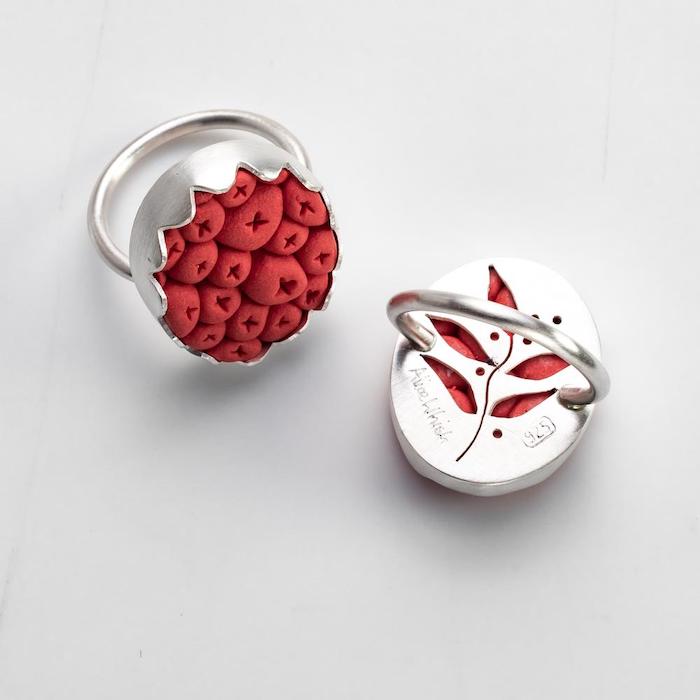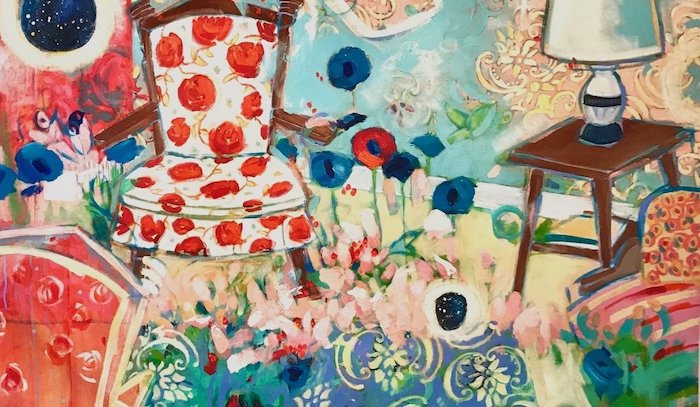It is said that the definition of insanity is doing the same thing over and over again and expecting different results.
If true, why do we continue to manage our art businesses the same way we did last year or the year before?
In order to see better results, you have to do something different.

I don’t share this list lightly. It’s got some things on it that could really shake up the status quo. They could skyrocket your success when implemented with sound counsel or just as easily fail miserably if you don’t have the proper knowledge and support in place.
I share it because it’s something I wanted for my own business—a list I could have at the ready when I sensed a necessary change. I wanted something to remind me of everything that is possible. To remind me that anything is possible when I commit to it.
In a sense, this is a master list of possibilities. You are not meant to use it as a checklist of items to tackle one at a time.
I encourage you to use this in the following situations.
- You are stuck or bored—creatively, financially, or mentally—and want a new project.
- You are seeing a drop-off in any aspect of your business.
- You want to make the most of a big exhibition or event you have coming up.
Let’s dive in.
Planning + Productivity
I always start here because you want to make sure you’re headed in the right direction. You want to be intentional about where you’re headed rather than flailing about from task to task.
A roadmap for your art business and career gives you focus. And the more successful you are at executing that roadmap, the more important it is to use your time wisely.
1. Maintain a journal to document progress and work through challenges.
2. Plan for your future rather than waiting for it to happen to you.
3. Project future income possibilities.
4. Keep your financial accounts updated.
5. Maintain your calendar so you can see all of your obligations in one place.
6. Conduct monthly planning hours to stay on top of your goals.
Making Art
Without the art, you are not an artist. Your work in the studio must always come first. If you aren’t making, you have nothing to market. You have no business.
Sometimes, however, you get in a rut in the studio. or you’re just not feeling it for the work in front of you. Change things up!
7. Learn a new medium or technique for more sophisticated work.
8. Conduct research for a new body of work.
9. Make smaller art to get you out of your comfort zone.
10. Make larger art to hold your bigger ideas.
11. Clean your studio for a fresh perspective.
12. Finish unfinished work or reuse its material.
13. Start or stop doing commissions.
Selling Your Art
If only it was as easy as putting a price on your art and watching it get snatched up by a lucky collector. There’s a lot of work that goes into selling, and numerous strategies you can try to sell more art.
14. Raise your prices.
15. Lower your prices. (Not one I would normally suggest, but listen to how it worked for Adele Sypestyn.)
16. Have a sale. Sometimes you need to bring in quick cash.
17. Have your art professionally photographed.
18. Maintain your inventory so that you can quickly look up items.
19. Upgrade your inventory platform.
20. Get art on a new online platform (Etsy, Saatchi, FineArtAmerica, etc.).
21. Apply to shows. Apply to different shows.
22. Find a new venue for showing and selling your art.
23. Add prices and a How to Buy button to your site.
24. Add e-commerce to your site.
25. Archive sold work that’s on your website.
26. Streamline your packing and shipping.

Growing Your Audience
You want more and more people to see your art because the more people who see it, the more people there are to talk about it, share it, and buy it.
Blessedly, you can do much of this online these days, but aim for quality rather than quantity.
27. Network in person when it’s safe to do so.
28. Reach out to new people online.
29. Connect with artists you admire.
30. Polish your introduction so that it’s ready to use when you need it.
31. Give public talks online or in person.
32. Start a podcast.
Nurturing Relationships
Regardless of the business you’re in, relationships are everything. You have to be able to connect with people and then stay in touch with them so they know you care.
Relationships are nurtured on the phone, on social media, in email, and (hopefully again very soon) in person. It’s essential that you make relationship-nurturing a top priority.
33. Segment your list so you can email to specific audiences.
34. Add autoresponders to your email marketing service to save time.
35. Send emails on a schedule.
36. Use real mail to send postcards, birthday cards, or holiday greetings.
37. Connect with curators, gallerists, arts administrators, consultants, and designers as appropriate for you.
38. Invite a VIP to a studio visit.
39. Reach out to individuals 1-on-1 (text, email, phone, mail).
40. Send direct messages on social media.
41. Ask a collector if they’d like to host a home art party for you and your art.
Improving Marketing Materials
If you’re hanging on to the same artist statement or bio that you wrote five years age—or even the same one from last year—it’s time for an upgrade. The chances are slim that your art has remained the same during that period of time, so why would you use the same marketing materials to promote the work?
Oh, and can we talk about that 15-year-old headshot you’re still using?
42. Update your artist statement, bio, and website text to reflect your artistic growth.
43. Write better stories about yourself and your art for deeper connections.
44. Refresh your brand fonts, colors and, if you use one, logo.
45. Get new business cards, brochures, or postcards.
46. Get better photos of your art—remembering that they must be as good as the art itself.
47. Get better photos of you that make it clear you’re a working artist.
48. Publish a catalog of your art, which is an excellent way to share your work with serious collectors, gallerists, and curators.
Getting Help
Artists are fiercely independent. You usually love DIYing everything—using the resources you’ve figured out or are curious about exploring.
But DIY doesn’t mean Do It Alone. You can have help! And there are times when you must seek help from others in order to expand your career.
49. Hire a virtual or office assistant, especially if you find tasks are slipping through the cracks.
50. Hire a studio assistant when you can’t keep up with the demand.
51. Hire a bookkeeper or accountant if you’re terrible at staying on top of your finances and paying taxes on time.
52. Hire a housekeeper or nanny for your sanity.
53. Hire an art business consultant to help you prioritize these 96 strategies!

Marketing Online
Online marketing deserves its own space. I did touch on it in other sections, but please note that only 7 of the 96 bullet points are for online marketing.
While my clients tend to search for magic bullets around getting more Instagram followers, it’s just one strategy of many available options.
54. Post regularly to your favorite social media platforms. (Don’t forget LinkedIn and Pinterest!)
55. Diversify the posts and images you’re sharing—what is in them, time of day, and text you write.
56. Take photos. Take more photos. Learn how to take better photos.
57. Make videos. Make more videos. Learn how to make better videos.
58. Start livestreams on Facebook, Instagram, or YouTube and speak directly to your audience.
59. Start or revive a blog, especially if you don’t mind writing.
60. Update your website to make it look fresh.
Productizing Your Art
If you have art that people would buy over and over again, why not slap it on products? Or find an aspect that you can turn into production work—something that could be made quickly with a little extra help?
Just remember that you have to promote lower-priced products the same way you promote higher-priced originals, and you have to sell a lot more items with lower prices in order to equal the sale of a single original. Do you have the bandwidth to do both?
61. Make note cards of your art to package and sell.
62. Offer reproductions of your originals.
63. Research art licensing.
64. Put your art on products via sites like RedBubble, Spoonflower, and Vida.
65. Create a deck of inspiration cards.
66. Add products to your online shopping cart.
67. Seek brick-and-mortar shops to sell your products.

Attracting Publicity
Imagine what it would be like if there were even a handful of people who would write about and share your art. Think about the buzz and opportunities that could arise as a result.
It can happen, but you won’t be blessed out of the blue. You have to work hard to get good publicity. You have to do what you can to attract it.
68. Send press releases when you have a story that would capture readers’ attention.
69. Freshen up the story you tell about yourself and your art.
70. Follow writers, critics, curators, bloggers, and podcasters on social media so you know what they write and talk about.
71. Become a resource for the media by writing stories for publications and websites.
72. Make a media room on your website when you have numerous features to share.
73. Pitch, succinctly, your story to appropriate podcasts.
Advertising
Paid advertising is way down on the list because I think you can waste a lot of money if you don’t know what you’re doing.
If, however, you take the time to educate and inform yourself about the various possibilities—and how they fit with your art and goals—you might find that advertising is a good option.
74. Buy a package of print ads from a publication that is in line with your art.
75. Dip your toes into Facebook and Instagram advertising.
76. Take out a banner ad on a pertinent website.
77. Buy space in a relevant email newsletter.

Upping Your Game
When you want to move up a level in the art world, you have to take risks. This means moving beyond your comfort zone and challenging yourself with new opportunities and projects.
You’ll face criticism and rejection, but you sure won’t get very far by continuing to play it safe.
78. Take an art or business course.
79. Apply for grants for a new project.
80. Apply for a residency.
81. Submit a public art proposal.
82. Collaborate with artists who challenge you.
83. Learn a new technology that you’ve been avoiding because of a steep learning curve.
84. Plan a multi-year project that is guaranteed to have people talking.
Teaching
Teaching really isn’t a strategy. It’s a calling.
You shouldn’t start teaching just to make money. You should start teaching because you have something valuable to share and delight in the idea of sharing it with others.
These final items are for you if you’re already teaching.
85. Schedule a new workshop—online or off.
86. Figure out online teaching to counter, ahem, worldwide pandemics.
87. Start mentoring to higher level artists.
88. Connect with people and organizations that might hire you for classes and workshops.
89. Learn to write a proper sales page to sell more classes.
90. Start an affiliate program to encourage referrals and pay people for promoting your classes.
91. Segment students in your email marketing platform so that you can communicate with them separately.
92. Create a lead magnet (free offer) to capture prospective students.
93. Map out your students’ experience to make sure they’re being cared for along the journey with you.
94. Stay connected with former students because they’re a good resource.
95. Begin a membership program to keep students together.
96. Gather meaningful testimonials from happy students.

Putting This List to Work
Now you see that anything and everything is possible. You aren’t at a loss for ideas. And because you’re a self-employed artist, you enjoy a great deal of freedom to create a life around doing what you love.
You are free to take on any of these and set your own schedule.
Aside from family and other personal obligations you’re free to get up when you want, run errands or exercise when it’s convenient, take a nap when your eyelids are heavy, and work when you’re inspired. Except that if you only work when you’re inspired, you might make a little money here and there, but you will never make a big impact with your art.
If your business is going to become what you envision it to be, you need to make hard decisions about how you will spend your time.
You need to take charge of your schedule. And you can do it with confidence.


